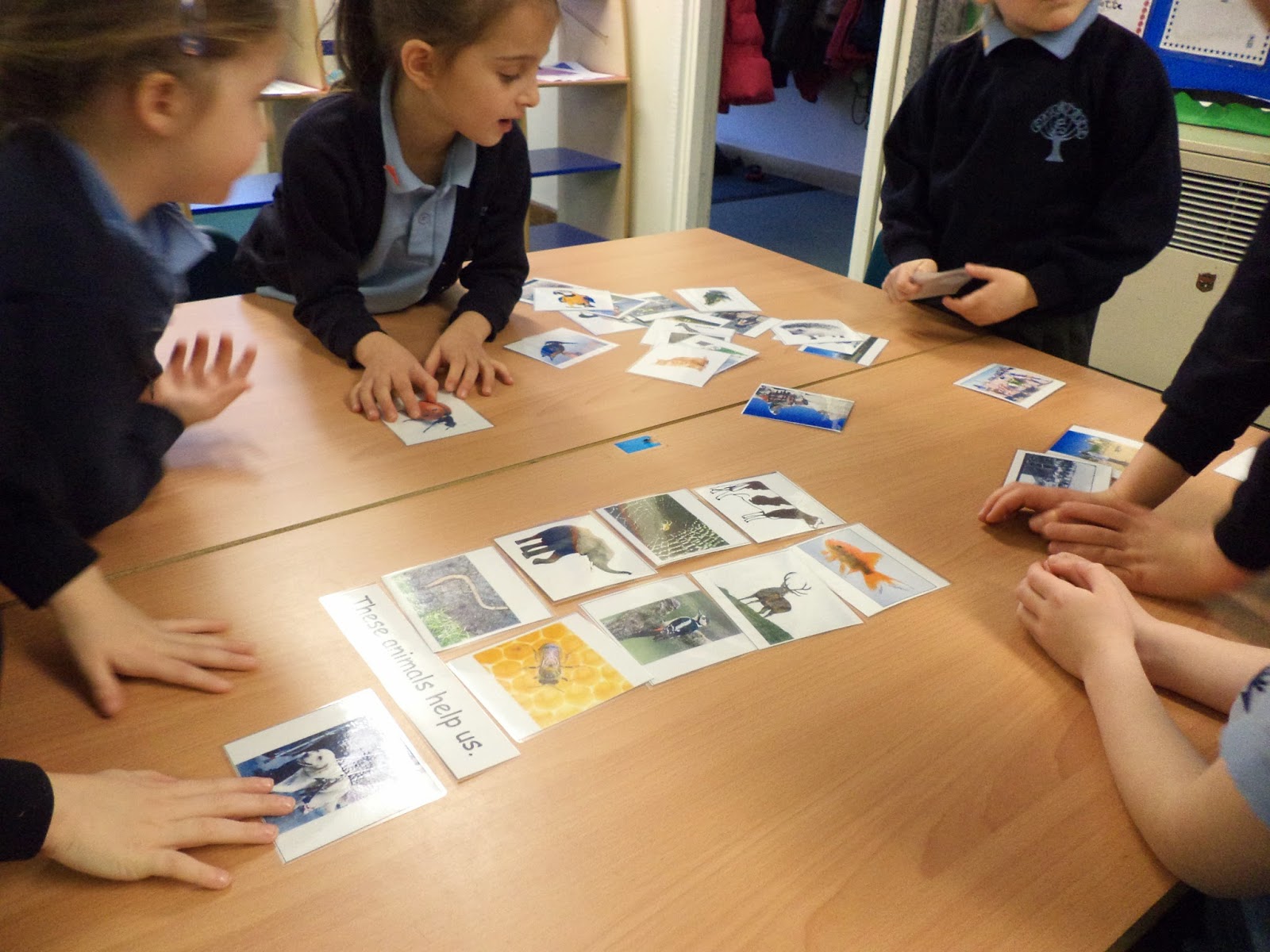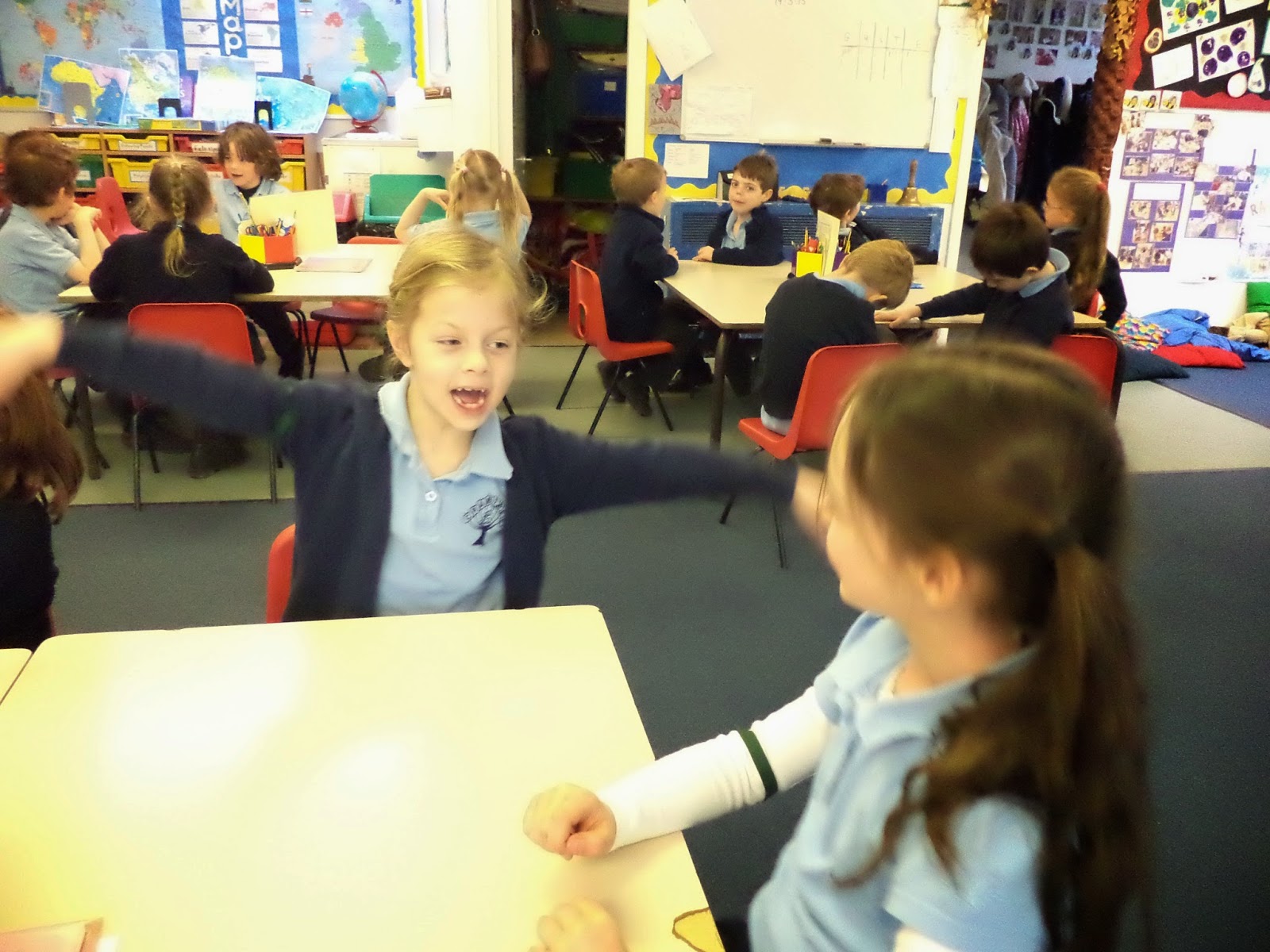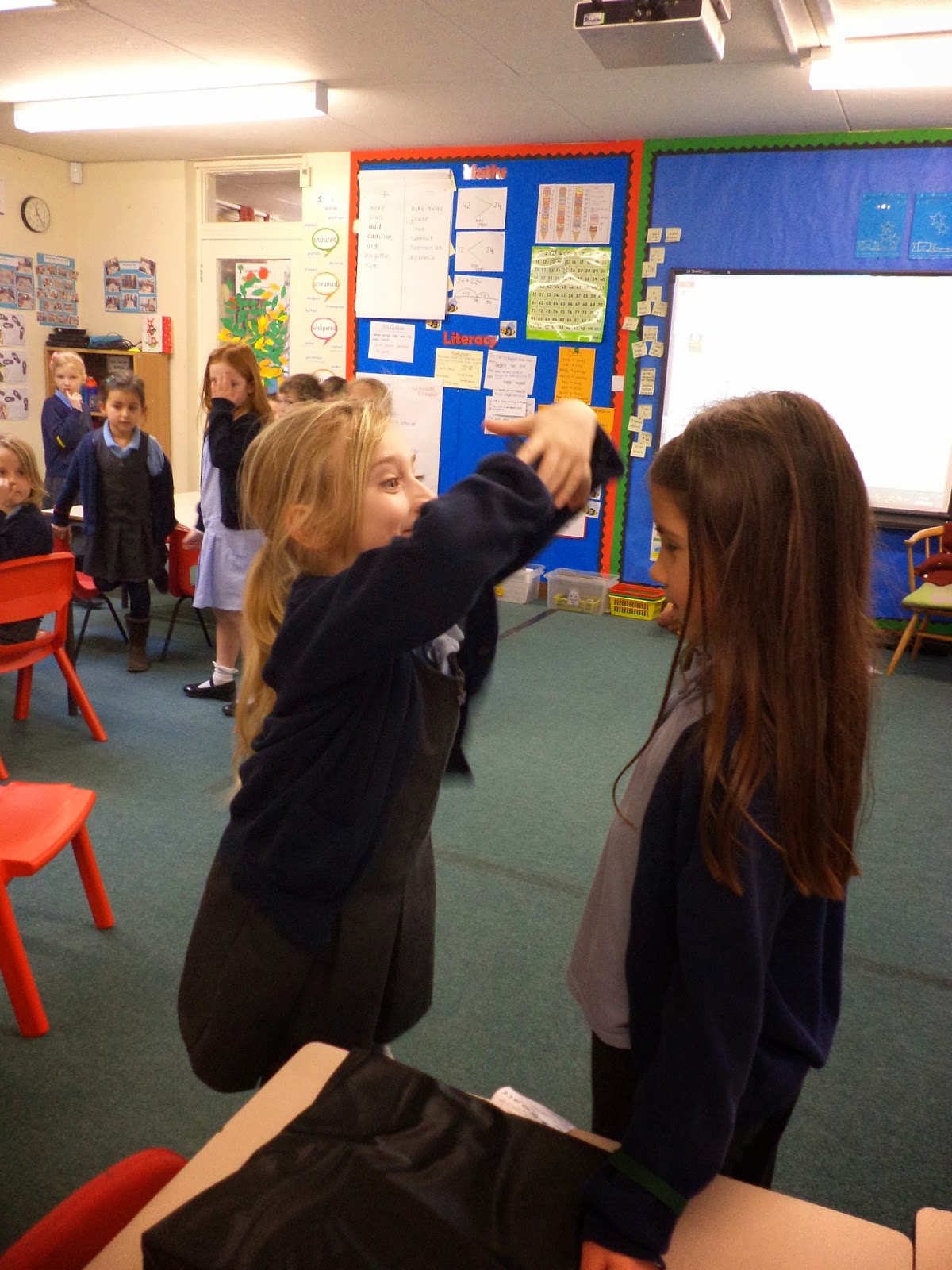In Year 1, during the Spring term, we have been
focusing on the theme of ‘New Life’.
As we were starting a new calendar year, we thought about
new beginnings, including New Year traditions. We made up our own New Year’s
resolutions and explained why they were a good idea. As an example of someone
who made a fresh start in his life, we heard the Bible story of Zacchaeus.
Then we looked at what Christians and Jews read in the Bible
about the beginning of the world. Whilst making models and paper-craft, we
imagined what it might be like to be ‘Creators’ and how we would want people to
care for our creations.
We then heard a Buddhist story about a swan, and learned how
important Buddhists believe it is to care for animals. We decided all animals
are valuable in some way, even those we aren’t keen on!!
We went on to think about caring for the wider world. Having
heard the Bible story of Noah, we made rainbows containing our seven ‘hopes for
a better world’, and thought about how we could play our part to help them come
true.
Thinking about life-cycles in the animal world, and in the
days and seasons, led us to consider patterns in a human life. We mimed
significant activities from different stages of life, and discussed good and
bad aspects of each stage. Then we learned about the Buddhist belief in life as
a circle.
We then focused on Christian thoughts about Heaven. In groups, we brainstormed our ideas as to what we thought heaven might be like, whilst recognising that, even for Christians, this remains a mystery for now! We discussed the question, ‘What should someone do to go to Heaven?’ and learned that Christians believe it is a free gift (‘grace’).
New life has been appearing in our own school grounds! We
went outside to look for signs of new shoots, blossom and potential fruit. We
then found out how some people try to show good sides to their character by
what they do and how they behave. We learned that Christians call these ‘the
Fruits of the Spirit’. We tried to guess what ‘fruits’ our friends were showing
when they acted them out with partners. We heard about Mother Teresa who tried
to live her life in this way.
Spring is a great time to learn about religious festivals!
Our whole school spent a day focusing on the Hindu festival
of Holi. To prepare for this, Year 1 heard the story of Prahlad and Holika; we
then wrote down the bad things we would like to get rid of from our behaviour,
and ‘burned’ them on pretend fires, walking around the ‘fires’ just as Hindus
might at Holi. We enjoyed greeting each other, saying ‘Namaste!’ We learned
that fire is used as a symbol of purifying, in several religions. We shared our
learning in a whole-school assembly, held to launch our School ‘Holi Day’. Holi
is also known as a Festival of Colours. Have a look at all our year-group blogs
for photos of the Colour-Day activities which we enjoyed in Maths, Literacy and
Art!
Next, we learned about the Jewish festival of Purim. We acted out the story of Esther, and whenever we heard the name of the evil ‘Haman’ we hissed, booed, stamped our feet and rattled our graggers to drown out his name – just as Jewish children do!
We then moved onto considering how new babies are special,
and how they are welcomed into Christian churches. We acted out an Infant
Baptismal service, and some children shared their own experiences of baptism,
including those of their own siblings.
We decided that the Christian festival of Easter has both
sad and happy sides to it. We enjoyed a happy ‘parade into Jerusalem’ waving
the palm branches we made. But we also thought about which sad and happy parts
there are in the rest of the story. We asked ourselves why some people eat pancakes,
hot cross buns and Easter eggs, and why there are so many pictures of chicks,
bunnies and flowers at Easter time. We matched symbols to events remembered by
Christians during Holy Week leading to Easter.
After Easter, Year 1 will be starting our new RE topic, focusing
on Special Books.
In Year 2, during the Spring term, we have been
focusing on ‘Special People’.
We began by thinking about famous people who do special
things for our country or our town. But we decided that special people aren’t
always famous: there are even people in our own families who set us a good
example! We worked in groups using ‘diamond ranking’ to show which qualities we
thought make a good leader.
We then went on to find out about the role of an Anglican minister. We discovered that s/he has lots to do during the week, as well as on Sundays, leading and caring for people!
An Anglican minister follows the example of Jesus, so next
we learned about some of the things which Christians read in the Bible about
what Jesus did. We heard the stories of Jairus’ daughter and another lady who
was healed by Jesus, and had a lively discussion about what we think about
‘miracles’! There were lots of different views, so it was great that we can all
listen respectfully to each other! We used a ‘freeze-frame’ drama activity to
help us consider how people might have felt if they had been there. We also
played a ‘hot-seat’ game: individual children pretended to be characters from
the story, and answered our questions about their thoughts and feelings at
different points.
We also learned how Jesus is important for Christians not
just as a Healer, but also as a Teacher. We thought about all the people who
have taught us or given us advice, and the sorts of things we have learned from
them. We looked at some of the teaching of Jesus: the Sermon on the Mount; trying to love
enemies; and Jesus’ two Great Commandments. We tried to invent one or two rules
which might cover all our Crabtree Golden Rules, just as Jesus gave two to
cover the Ten Commandments.
The next special person we learned about was Moses. Having
found out about some of his experiences, we imagined what we would want to ask
him if he came as a guest to Crabtree Infants’ School! One of our class
pretended to be Moses, sitting on the ‘hot seat’, and we asked him lots of
questions, including remembering back to our learning in Year 1 about Shabbat
and about the Torah. He gave some very
good answers, but we still keep thinking of more questions – an important part of RE!
Next, we found out about the Mu’adhin, who calls Muslims to
prayer. We started by listening to lots of recorded sounds, and guessed what
message each one tells us. We heard the story of Bilal, who became the first Mu’adhin.
Then we thought of messages we believe are important enough to shout from the
top of a tall tower, and shouted them into our digital recorder!
We learned about two people who are special to Sikhs. Firstly,
Guru Nanak, the first Sikh guru, who spent time meditating on the important
things of life, and wrote songs to teach people about them. We thought the
story of Guru Gobindh Singh was going to be much less peaceful, but it actually
had a happy ending! We enjoyed dressing up in the Five Ks. We thought about
promises we make in Beavers, Rainbows, etc., and learned about the promises
Sikhs make.
We also learned about the Buddha. We looked carefully at a
statue and pictures of the Buddha, noticing the different hand positions and
learning of their symbolism. We tried communicating important facts about
ourselves to a partner, using only hands! We heard the story of how Siddharta
Gautama became the Buddha, having changed his life for the better. He asked
himself about ‘the meaning of life’, which is a big question! – but we thought
of some very wise suggestions of our own!
We learned what Christians are remembering when they eat
pancakes on Shrove Tuesday or give something up for Lent. Having heard the
Bible account of Jesus being tempted in the wilderness, we wrote down some
temptations to which we would want to say, ‘No!’
The Jewish festival of Pesach (Passover) linked well with
our subsequent learning about Jesus’ Last Supper. We shared a group activity,
studying and drawing the various parts of the seder plate used for Pesach, and
learned what each of the foods symbolises for Jewish families. We enjoyed
hunting for the hidden half-Matzah – just as Jewish children do!
When we came to learn about Jesus’ Last Supper, we
discovered that he was actually celebrating Pesach with his friends! We looked
at a chalice and paten and guessed what they were for - Holy Communion – and
learned how, for Christians, this commemorates the events of Easter. We used
‘Godly Play’ figures and props to tell the Easter story in a thoughtful way,
which led us to share our own comments and questions afterwards.
After Easter, Year 2 will be starting our new RE topic, focusing
on Special Places.
The whole school enjoyed an assembly about Noah’s Ark , led
by Captain Ralph Walker, from the Salvation Army. We especially loved his ‘magic
tricks’!
Take a look at these photos of our whole-school ‘Holi
Day’ activities:































































































.JPG)
.JPG)
.JPG)
.JPG)


.JPG)



